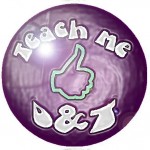Special/Additional Educational Needs (SEN / AEN) and English as an Additional Language (EAL)
This could be included in the Every Child Matters category however it’s such a wide topic I have given it its own section. Very little material is available for dealing with these special children in Design and Technology and if it is, it’s not easily interpreted and understood by new teachers.
If you’re working in a school with a very high percentage of AEN and EAL pupils and teacher training I doubt you will have been provided with enough help and tips with actually teaching these pupils. My website is aimed at helping teachers teach D&T so you will not be overloaded with jargon and information, but you will be offered personal hints and tips in dealing with these pupils and catering to their specific learning needs.
 First of all, I would advise you to take a good look through your AEN & EAL register and record all of your pupils who you find on there. Sometimes you will be surprised to learn which pupils appear on there as they can be very good at masking their difficulties and insecurities. Once you know who is listed, you will be able to adapt your teaching to include them effectively.
First of all, I would advise you to take a good look through your AEN & EAL register and record all of your pupils who you find on there. Sometimes you will be surprised to learn which pupils appear on there as they can be very good at masking their difficulties and insecurities. Once you know who is listed, you will be able to adapt your teaching to include them effectively.
SEN pupils tend to fall under these 3 categories:
- physical or sensory difficulties
- intellectual difficulties
- emotional and behavioural difficulties
You can help them by doing the following:
- change the type of task you give them
- offer additional support to complete the task
- modify your worksheets and resources
Ideally, pupils with physical and sensory difficulties will have a TA (Teaching Assistant) working with them who know the pupil well.
Some information for subject leaders to adapt the workshop to cater for these pupils can include; changes in work heights, extended levers, special grips for tools, non slip surfaces etc.
For pupils with intellectual difficulties, you might find that pupils will have difficulties in listening to and remembering long or complicated instructions and may be oblivious to potential hazards in the workshop.
Simple step by step guides and instructions will be beneficial to you, as you won’t find yourself rewriting and explaining the same instructions repeatedly, especially when completing practical work and pupils are all at different stages!
Teaching pupils with whom English is an additional language can be a tough and challenging task, however there are strategies we can use to help cope and help the pupils communicate.
The first thing I would suggest is “buddying” them up with a pupil who speaks the same language so they are able to translate.

I think the general notion with EAL students is to simplify your language and help them expand their vocabulary. A useful way of getting EAL pupils to learn keywords in Technology are to use lots of pictures (we all know they are universal and worth 1000 words!)
Final note:
They will get there as they are keen to learn the language. I once taught one EAL pupil who used to have her own note book and would jot down keywords and their translations. Funnily enough she was the only one in the class to get all her spellings correct! We have to ensure that all pupils make progress in lessons, and by differentiating your lessons will enable you to do this for each pupil!

